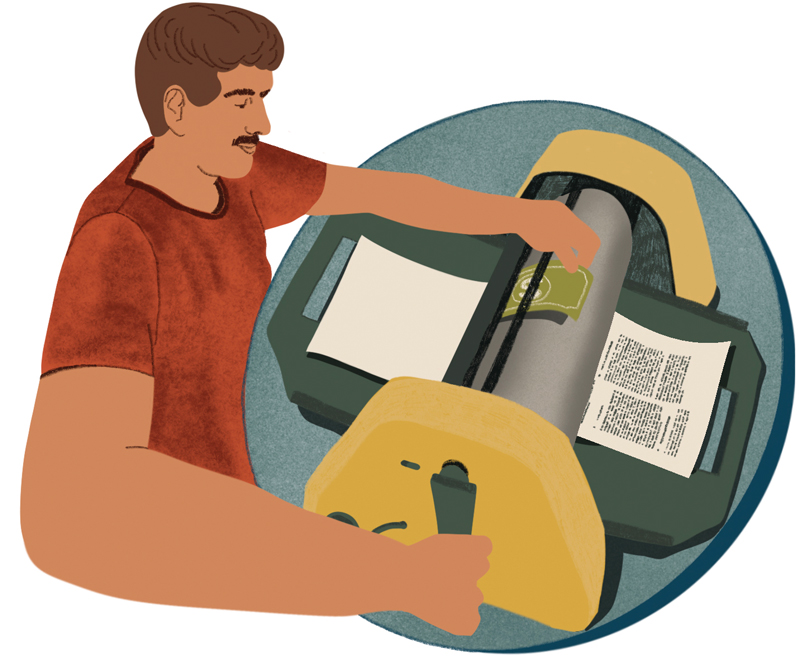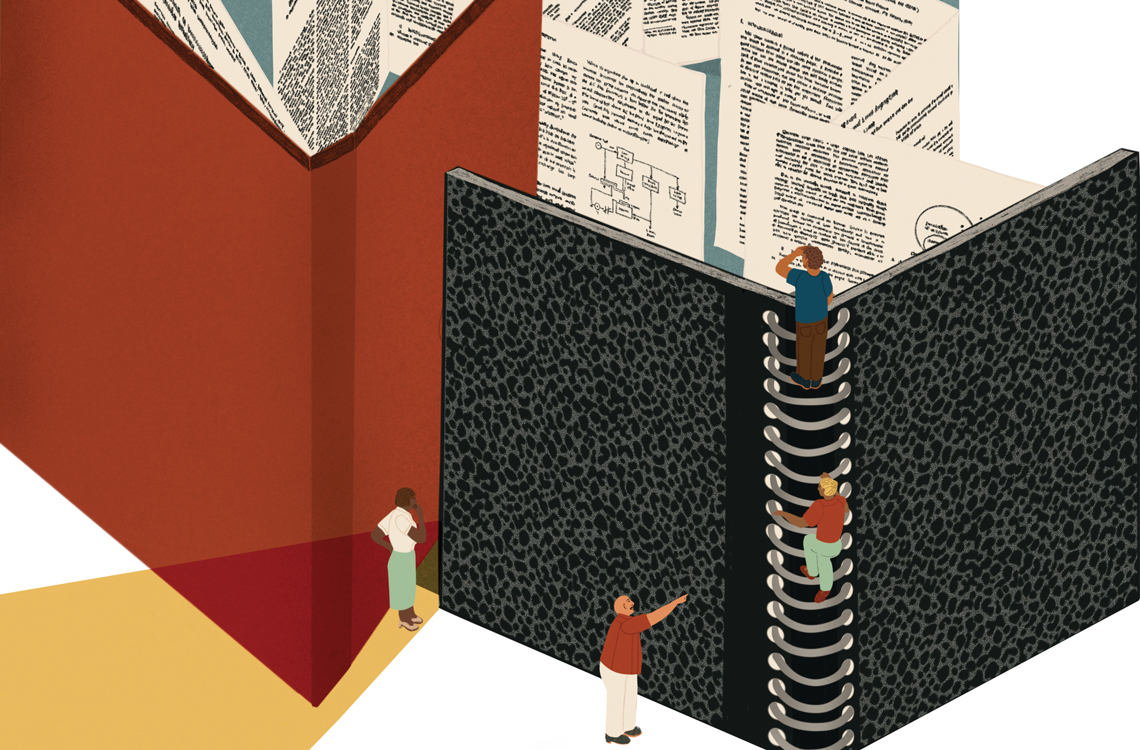Envision an ideal world where research findings are openly and freely shared, their significance collaboratively debated and assessed by peers and, in the end, research authors choose the optimal timing and journal for publication, free from the constraints of journal idiosyncrasies and deadlines. This somewhat utopian open publishing model is being proposed by a consortium of science-funding agencies and charitable foundations called cOAlition S. Five years ago, this coalition launched Plan S, an initiative led by research funders that has significantly expanded reader access to science publications without paywalls.
“Our vision is a community-based scholarly communication system fit for open science in the twenty-first century. This system empowers scholars to share the full range of their research outputs and to participate in new quality-control mechanisms and evaluation standards for these outputs,” states a draft proposal titled “Towards Responsible Publishing,” which is open to suggestions until April. This model amalgamates several existing ideas, such as preprint repositories, where authors in different fields share research findings prior to peer review, and curation initiatives like Peer Community In, a nonprofit scientific organization that offers an open-science editorial process by creating specific communities of researchers reviewing and recommending preprints in their field. Another open peer-review platform is Open Research Europe, funded by the European Union. In these initiatives, peer review is accessible to readers and this, argues cOAlition S, will lead readers to evaluate manuscripts based on their relevance rather than the prestige of the journal. Costs would be shared by the same entities currently sponsoring publication: universities, governments, libraries, and funding agencies. The role of publishers would shift from primarily focusing on manuscript quality, which has already been scrutinized, to providing editing and composition services for selected manuscripts.
The current proposal aims to revive the original spirit of Plan S, which initially advocated for a more open and decentralized scholarly communication model. Originally, the plan proposed that researchers funded by signatory agencies could only use fully open-access journals to publish their work. Even the possibility of creating new open-access journals was tentatively considered. However, the consortium — now comprising 17 research-funding agencies from several European countries as well as nations such as Canada and Australia, alongside science-funding charitable foundations like the Bill & Melinda Gates Foundation and the Wellcome Trust in the UK — was met with strong opposition from publishers, scientific societies, researchers, and national governments. Both the United States and China, despite themselves adopting open-access policies, decided not to join the coalition, as did some European nations, including Germany and Sweden.
The model was later adjusted in a bid to gain buy-in. Among the proposed compromises, implementation was postponed from 2020 to 2021, and authors sponsored by consortium agencies were temporarily permitted to publish in hybrid journals. These journals still charge subscription fees but agree to release articles for open access on their websites if manuscript authors pay for it. A frequent critique of this model is that it represents the worst of both worlds for middle- or low-income countries, which are required to pay both to unlock access to specific papers and for full access via subscription to hybrid journals. These journals, meanwhile, claim that this is a transition phase but show no sense of urgency in abbreviating it.
After securing assurance that their usual source of funding (subscription charges) would be replaced by an alternative source — Article Processing Charges (APCs) — even the most resistant publishers agreed to enter into so-called “transformative agreements.” Under these agreements, the funds previously used by an institution to pay subscription fees are redirected towards covering publication fees for articles authored by its researchers, with journals committing to progressively expand their open-access activities.
 Julia JaburBut while Plan S did achieve some progress, these advances came with a troubling side effect: journals began demanding often exorbitant fees from authors to make their papers open access. The prevalent model became gold open access, where articles are made available online as soon as they are published, provided the author pays the APC fee. According to a report from cOAlition S, out of 168,000 scholarly articles published in 2022 and funded by consortium members, nearly 133,000 were open access. Of these, approximately 64,000 were published in gold access journals charging APCs from authors, while 42,000 were published in hybrid journals. Only 23,500 were available in the green model, a form of open access based on self-archiving, where articles are accessible only to subscribers on journal websites, but authors are allowed to post a version of the article online on their personal pages or public institutional repositories. Another 3,400 articles were published via the bronze model, where papers are made available in open access at the discretion of the publisher and without reuse licenses. Neither the green nor bronze approaches are accepted by cOAlition S.
Julia JaburBut while Plan S did achieve some progress, these advances came with a troubling side effect: journals began demanding often exorbitant fees from authors to make their papers open access. The prevalent model became gold open access, where articles are made available online as soon as they are published, provided the author pays the APC fee. According to a report from cOAlition S, out of 168,000 scholarly articles published in 2022 and funded by consortium members, nearly 133,000 were open access. Of these, approximately 64,000 were published in gold access journals charging APCs from authors, while 42,000 were published in hybrid journals. Only 23,500 were available in the green model, a form of open access based on self-archiving, where articles are accessible only to subscribers on journal websites, but authors are allowed to post a version of the article online on their personal pages or public institutional repositories. Another 3,400 articles were published via the bronze model, where papers are made available in open access at the discretion of the publisher and without reuse licenses. Neither the green nor bronze approaches are accepted by cOAlition S.
APC amounts can vary widely — prestigious journals will typically charge between US$3,000 and US$6,000 to publish a paper. In extreme cases, like some Nature journals, publishing costs can exceed US$11,000. The increasing adoption of this funding model has created significant challenges for low- and middle-income countries, which lack the bargaining power to secure favorable agreements with publishers or the financial resources to afford expensive fees. For example, FAPESP sponsors the publication of articles by research grant beneficiaries but has imposed a maximum cap of US$2,400 per article. Fees exceeding this cap are only allowed in exceptional circumstances and must be shown to be warranted.
The leaders of the consortium acknowledge these concerns. “It would be a failure on our part if we simply replace one model where people can’t read with another model where people can’t publish because of lack of funds,” Robert Kiley, head of strategy at cOAlition S, told Nature. Following complaints that it is exacerbating inequalities, the consortium has proposed introducing four APC tiers based on authors’ countries’ income levels.
Alicia Kowaltowski, a biochemistry researcher at the USP Institute of Chemistry and an advocate for open access, reviewed the proposal and expressed concerns. Countries were grouped according to a price parity index published by the World Bank. Under this system, Brazilian researchers would be penalized and would pay 10% more than the current APC value to subsidize poorer nations, which would receive discounts. “Argentina, Belize, Brazil, and Costa Rica, which are classified as upper-middle-income economies with modest investments in science and technology, are grouped alongside high-income economies with significantly higher science investment, such as Italy, Portugal, South Korea, and Spain,” Kowaltowski notes. She coauthored an article addressing this issue in Times Higher Education, in collaboration with physicist Paulo Nussenzveig from USP and computer scientist Claudia Bauzer Medeiros from the University of Campinas (UNICAMP). The trio of researchers suggests that, instead of skewed discounts, the consortium should adopt criteria based on more realistic economic and scientific investment indices, and effectively enhance science communication through preprints.
Preprints are likely to gain greater traction as they are increasingly favored among researchers and have been well-received by publishers. Other ideas are also being discussed. Dutch linguist Johan Rooryck, executive director of cOAlition S, has expressed support for a model already in wide use in Brazil, known as diamond or platinum open access. This model entails fully open-access journals that do not charge APCs from authors and rely on institutional funding and voluntary work. The concept is similar to the one adopted for Brazil’s SciELO library in 1997, a platform hosting 300 Brazilian open-access journals, which has largely been funded by FAPESP.
Abel Packer, coordinator at SciELO, believes there is ample room to expand the diamond model, although he does not anticipate radical changes. “cOAlition S has been constantly changing course: they initially aimed for unrestricted open access, then shifted to APCs, and now they’re discussing preprints and diamond journals. While this change is welcome, it requires careful discussion with the research community and phased implementation,” he says. He adds that only a few hundred journals worldwide use the diamond model, and publishing capacity will not be created overnight. Charging APC fees has become so prevalent that even some open-access journals within SciELO have adopted this practice recently. “There has been a shortage of science funding in Brazil in recent years, affecting academic journals as well. Consequently, some of our nonprofit journals have begun charging authors to cover part of their costs,” he explains.
The cOAlition S proposal is currently undergoing public consultation, and it remains uncertain what its final version will look like. Publishers are expected to oppose the anticipated loss of their dominant position, much as they opposed the initial design of Plan S. A spokesperson for Wiley consulted by Nature noted that the draft presented by the consortium offers “an interesting perspective” and agrees that researchers should have the autonomy to select the most appropriate journals for publishing their work. However, they emphasized: “Publishers have a crucial role to play in further improving the global research ecosystem.” Future progress will hinge on the level of consensus and adoption of the models under discussion.
One potentially deciding factor is the direction taken in the US. President Joe Biden has instructed all federal research-funding agencies to mandate open access for federally funded research upon publication starting in 2026, but the specific model to be implemented has yet to be determined. Science magazine, managed by the American Association for the Advancement of Science, has announced that it will not transition to gold open access but will permit authors to place a copy of their articles in public repositories, making them accessible to all readers. “This approach holds promise as it is both inclusive and does not alter the structure of the journals,” remarks Alicia Kowaltowski.
The imposition of excessive Article Processing Charges (APCs) has created attrition between science communication companies and journal editors and reviewers. Retraction Watch, a website dedicated to compiling news and data on retracted articles, has recently begun assembling a list of journals that have reported departures from their editorial boards due to disputes. Among the 26 cases documented since 2015, seven were due to disagreements over article-processing charges (APCs). In July 2023, over 40 members of the editorial board of Critical Public Health resigned, citing workload overload and objections to the £2,700 APC charged by the publisher, Taylor & Francis. Their resignation letter described it as an “impossible cost for many in less advantaged countries.” Another notable case was in August 2023, when two-thirds of the associate editors of the Journal of Biogeography stepped down amid a dispute with the publisher Wiley.
They considered the US$4,800 charge for publishing an article in open access to be exorbitant. In April, 42 editors of two neuroscience journals resigned in protest against the APC fees charged by publisher Elsevier for open-access publishing: US$1,800 for NeuroImage: Reports and US$3,450 for NeuroImage.
